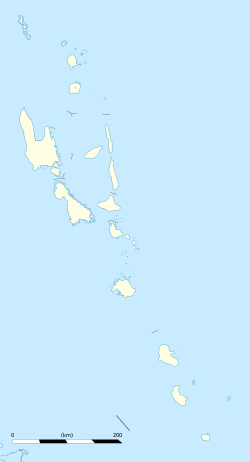Population
The island supports a population of about 750, [3] growing at 3.1% per year. The main settlement is Makata. The principal economic activity is subsistence agriculture. The GDP of the island is $457 per capita. Unlike the surrounding islands populated by Melanesians, Emae and Makura are Polynesian outliers. The island's language, also called Emae, is in the Futunic language family, which includes most of the outliers in Vanuatu. North Efate, one of the other languages of the archipelago, is used as a second language. Many of the islanders now live in Port Vila. The crowning of four Emae chiefs in 2004 occurred there, and many of the tribal chiefs live there. [4]
This page is based on this
Wikipedia article Text is available under the
CC BY-SA 4.0 license; additional terms may apply.
Images, videos and audio are available under their respective licenses.



